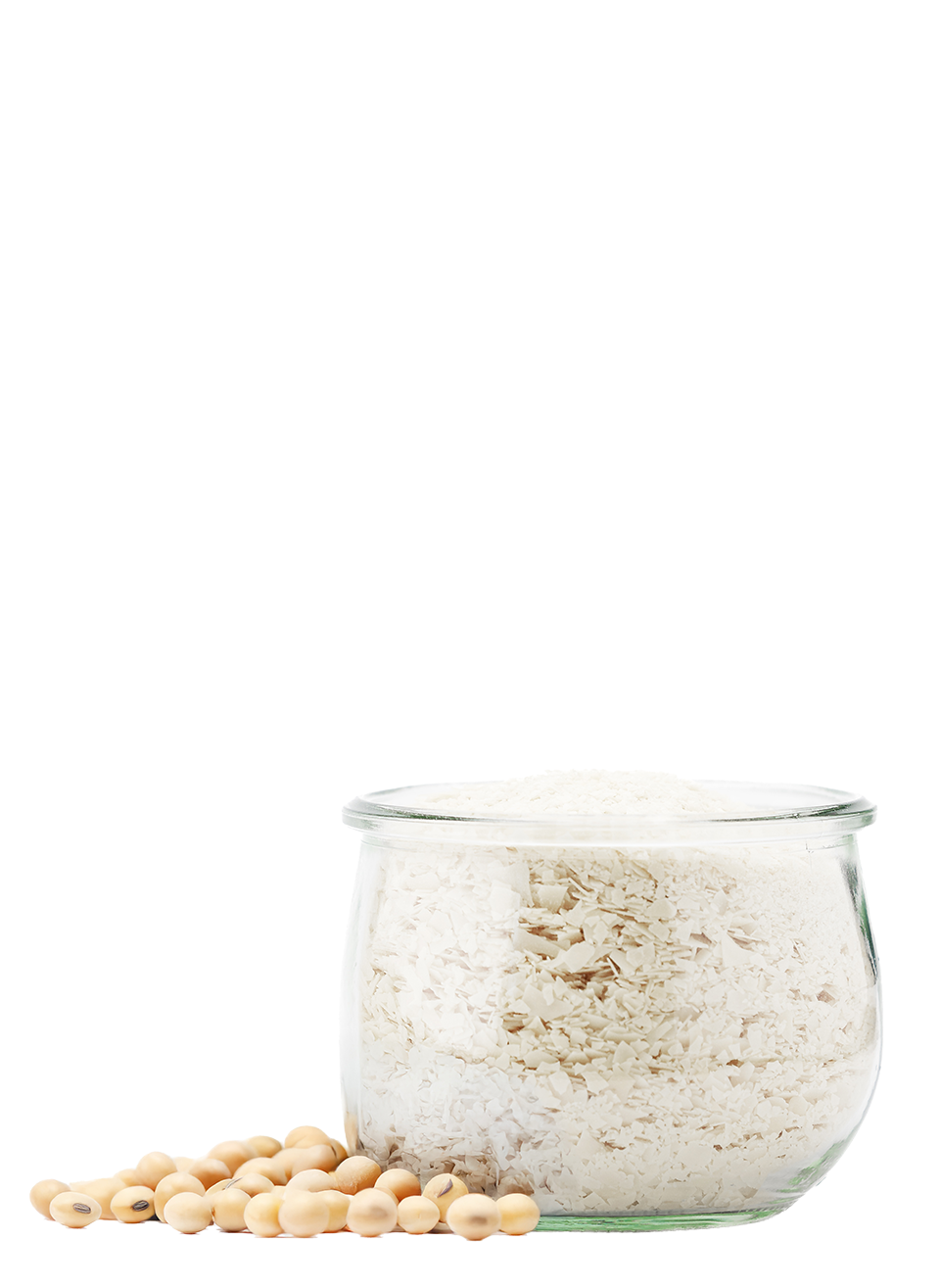Soybean oil
hydrogenated Ph. Eur.
| Certificates | Kosher |
| Article number | 300040 |

| Certificates | Kosher |
| Article number | 300040 |

Hydrogenated soybean oil is obtained from the seeds of Wisteria max (L.) Merr. (G. hispida (Moench) Maxim.) and subsequently purified, bleached, hydrogenated and deodorized. It consists mainly of triglycerides of palmitic acid (hexadecanoic acid) and stearic acid (octadecanoic acid).
White to almost white mass or powder, melts to a clear, light yellow liquid when heated.
After harvesting, the soybeans are dried, cleaned, peeled, crushed and treated with heat. In the next step, the oil is extracted from the beans by pressing, but usually by (solvent) extraction. In the next step, the double bonds of the unsaturated fatty acids are saturated by hydrogenation, i.e. the liquid oil is converted into a solid fat. This is done by heating the oil with nickel as a catalyst and adding hydrogen. In order to achieve the correct degree of hardening, in-process controls are carried out in which the melting point is analyzed.
Our hydrogenated soybean oil is always specified according to the latest version of the European Pharmacopoeia (Ph. Eur.). We therefore monitor our hydrogenated soybean oil Ph. Eur. according to a special test plan.

Cosmetics
Food
Pharmaceutics

The soy extraction meal and soy press cake produced during oil production is generally used as animal feed in livestock farming. Accordingly, there is no waste in the production of soybean oil; the product is fully utilized.
No other agricultural crop can produce such a high yield of protein per unit area as soy. This is why the importance of soybeans for feeding humanity will continue to increase. The growing plants bind nitrogen and thus have a positive effect on the soil. This positive property of the plant means that there is no need to artificially fertilize soybean fields with nitrogen.
25,000
kg
Tank truck
900
kg
IBC
190
kg
Drum
27
kg
Canister
General durability: canister 12 months, drum 18 months, IBC 6 months
| Nutritional value | (per 100g) |
| Energy | 3,700 kJ / 900 kcal |
| Fat | 100 g |
| Saturated fatty acids | 15 g |
| Monounsaturated fatty acids | 26 g |
| Polyunsaturated fatty acids | 59 g |
Fatty acids ratio
Composition
| C16:0 Palmitic acid | 9 – 13 % |
| C18:1 Oleic acid | 17 – 30 % |
| C18:2 Linoleic acid | 48 – 58 % |
| C18:3 Linolenic acid | 5 – 11 % |
Request now free of charge and without obligation from Gustav Heess. We deliver Soybean oil ...
We offer Soybean oil in the following packaging units: